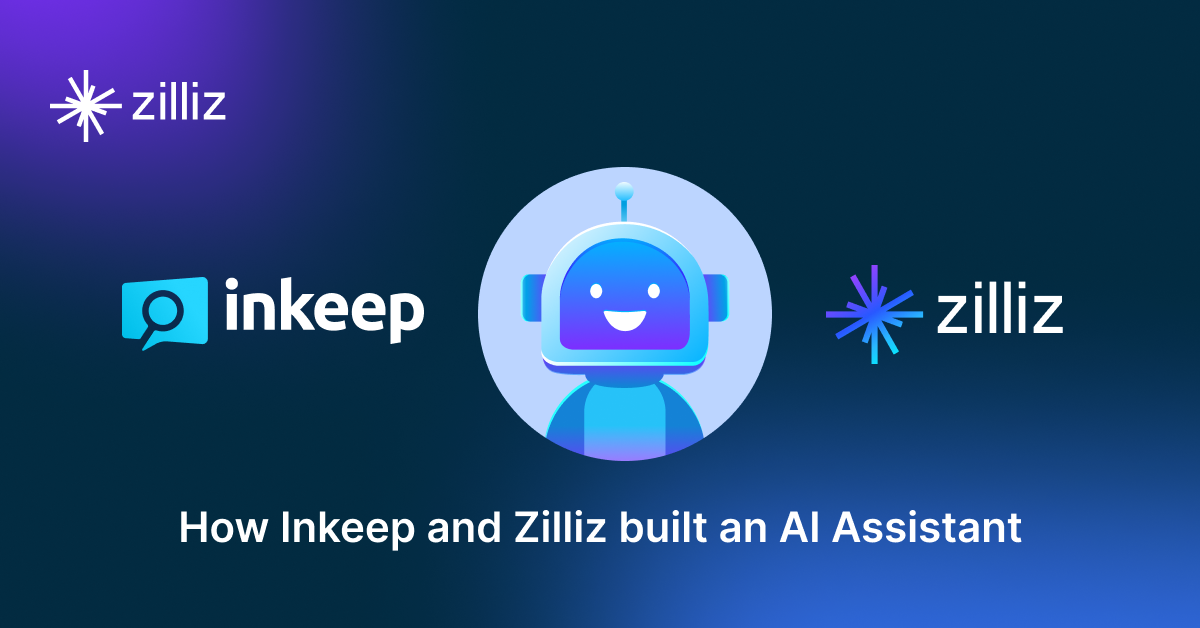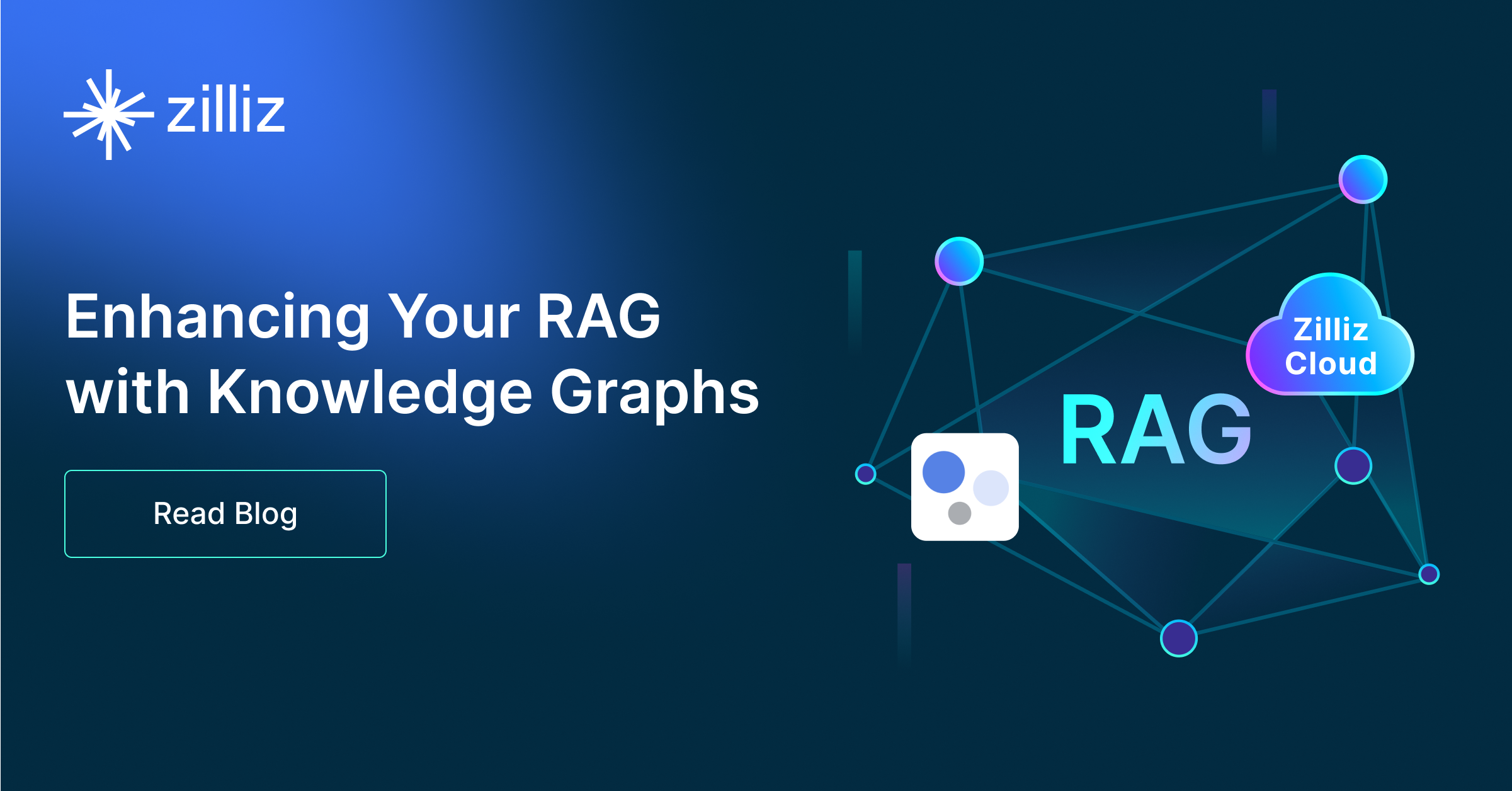Build RAG Chatbot with LangChain, Milvus, Together AI Mixtral 8x7B Instruct v0.1, and Cohere embed-multilingual-v2.0
Introduction to RAG
Retrieval-Augmented Generation (RAG) is a game-changer for GenAI applications, especially in conversational AI. It combines the power of pre-trained large language models (LLMs) like OpenAI’s GPT with external knowledge sources stored in vector databases such as Milvus and Zilliz Cloud, allowing for more accurate, contextually relevant, and up-to-date response generation. A RAG pipeline usually consists of four basic components: a vector database, an embedding model, an LLM, and a framework.
Key Components We'll Use for This RAG Chatbot
This tutorial shows you how to build a simple RAG chatbot in Python using the following components:
- LangChain: An open-source framework that helps you orchestrate the interaction between LLMs, vector stores, embedding models, etc, making it easier to integrate a RAG pipeline.
- Milvus: An open-source vector database optimized to store, index, and search large-scale vector embeddings efficiently, perfect for use cases like RAG, semantic search, and recommender systems. If you hate to manage your own infrastructure, we recommend using Zilliz Cloud, which is a fully managed vector database service built on Milvus and offers a free tier supporting up to 1 million vectors.
- Together AI Mixtral 8x7B Instruct v0.1: This model offers a powerful blend of instruction-based learning and advanced natural language understanding. With its 8x7B architecture, it excels in generating coherent and context-aware responses. Ideal for applications like chatbots, content creation, and educational tools where user guidance and high-quality interaction are essential.
- Cohere embed-multilingual-v2.0: This model specializes in generating high-quality multilingual embeddings, enabling effective cross-lingual understanding and retrieval. Its strengths lie in capturing semantic relationships in diverse languages, making it suitable for applications such as multilingual search, recommendation systems, and global content analysis where language diversity is a critical factor.
By the end of this tutorial, you’ll have a functional chatbot capable of answering questions based on a custom knowledge base.
Note: Since we may use proprietary models in our tutorials, make sure you have the required API key beforehand.
Step 1: Install and Set Up LangChain
%pip install --quiet --upgrade langchain-text-splitters langchain-community langgraph
Step 2: Install and Set Up Together AI Mixtral 8x7B Instruct v0.1
pip install -qU "langchain[together]"
import getpass
import os
if not os.environ.get("TOGETHER_API_KEY"):
os.environ["TOGETHER_API_KEY"] = getpass.getpass("Enter API key for Together AI: ")
from langchain.chat_models import init_chat_model
llm = init_chat_model("mistralai/Mixtral-8x7B-Instruct-v0.1", model_provider="together")
Step 3: Install and Set Up Cohere embed-multilingual-v2.0
pip install -qU langchain-cohere
import getpass
import os
if not os.environ.get("COHERE_API_KEY"):
os.environ["COHERE_API_KEY"] = getpass.getpass("Enter API key for Cohere: ")
from langchain_cohere import CohereEmbeddings
embeddings = CohereEmbeddings(model="embed-multilingual-v2.0")
Step 4: Install and Set Up Milvus
pip install -qU langchain-milvus
from langchain_milvus import Milvus
vector_store = Milvus(embedding_function=embeddings)
Step 5: Build a RAG Chatbot
Now that you’ve set up all components, let’s start to build a simple chatbot. We’ll use the Milvus introduction doc as a private knowledge base. You can replace it with your own dataset to customize your RAG chatbot.
import bs4
from langchain import hub
from langchain_community.document_loaders import WebBaseLoader
from langchain_core.documents import Document
from langchain_text_splitters import RecursiveCharacterTextSplitter
from langgraph.graph import START, StateGraph
from typing_extensions import List, TypedDict
# Load and chunk contents of the blog
loader = WebBaseLoader(
web_paths=("https://milvus.io/docs/overview.md",),
bs_kwargs=dict(
parse_only=bs4.SoupStrainer(
class_=("doc-style doc-post-content")
)
),
)
docs = loader.load()
text_splitter = RecursiveCharacterTextSplitter(chunk_size=1000, chunk_overlap=200)
all_splits = text_splitter.split_documents(docs)
# Index chunks
_ = vector_store.add_documents(documents=all_splits)
# Define prompt for question-answering
prompt = hub.pull("rlm/rag-prompt")
# Define state for application
class State(TypedDict):
question: str
context: List[Document]
answer: str
# Define application steps
def retrieve(state: State):
retrieved_docs = vector_store.similarity_search(state["question"])
return {"context": retrieved_docs}
def generate(state: State):
docs_content = "\n\n".join(doc.page_content for doc in state["context"])
messages = prompt.invoke({"question": state["question"], "context": docs_content})
response = llm.invoke(messages)
return {"answer": response.content}
# Compile application and test
graph_builder = StateGraph(State).add_sequence([retrieve, generate])
graph_builder.add_edge(START, "retrieve")
graph = graph_builder.compile()
Test the Chatbot
Yeah! You've built your own chatbot. Let's ask the chatbot a question.
response = graph.invoke({"question": "What data types does Milvus support?"})
print(response["answer"])
Example Output
Milvus supports various data types including sparse vectors, binary vectors, JSON, and arrays. Additionally, it handles common numerical and character types, making it versatile for different data modeling needs. This allows users to manage unstructured or multi-modal data efficiently.
Optimization Tips
As you build your RAG system, optimization is key to ensuring peak performance and efficiency. While setting up the components is an essential first step, fine-tuning each one will help you create a solution that works even better and scales seamlessly. In this section, we’ll share some practical tips for optimizing all these components, giving you the edge to build smarter, faster, and more responsive RAG applications.
LangChain optimization tips
To optimize LangChain, focus on minimizing redundant operations in your workflow by structuring your chains and agents efficiently. Use caching to avoid repeated computations, speeding up your system, and experiment with modular design to ensure that components like models or databases can be easily swapped out. This will provide both flexibility and efficiency, allowing you to quickly scale your system without unnecessary delays or complications.
Milvus optimization tips
Milvus serves as a highly efficient vector database, critical for retrieval tasks in a RAG system. To optimize its performance, ensure that indexes are properly built to balance speed and accuracy; consider utilizing HNSW (Hierarchical Navigable Small World) for efficient nearest neighbor search where response time is crucial. Partitioning data based on usage patterns can enhance query performance and reduce load times, enabling better scalability. Regularly monitor and adjust cache settings based on query frequency to avoid latency during data retrieval. Employ batch processing for vector insertions, which can minimize database lock contention and enhance overall throughput. Additionally, fine-tune the model parameters by experimenting with the dimensionality of the vectors; higher dimensions can improve retrieval accuracy but may increase search time, necessitating a balance tailored to your specific use case and hardware infrastructure.
Together AI Mixtral 8x7B Instruct v0.1 optimization tips
Together AI’s Mixtral 8x7B Instruct v0.1 uses a mixture-of-experts (MoE) architecture to balance efficiency and performance. Optimize retrieval by dynamically adjusting the number of retrieved documents based on query complexity to prevent overloading the context window. Structure prompts effectively, ensuring that critical details are at the start of the input to guide the model’s focus. Use a temperature of 0.1–0.3 for factual accuracy while tweaking top-k and top-p for balanced response generation. Together AI’s inference stack allows for optimized execution, so enable expert pruning to limit active pathways when full capacity isn’t needed. Implement caching strategies for common queries to minimize redundant processing. If integrating multiple models, use Mixtral 8x7B for medium-to-high complexity reasoning while offloading simpler queries to smaller, more efficient models.
Cohere embed-multilingual-v2.0 optimization tips
Cohere embed-multilingual-v2.0 supports a variety of languages, making it ideal for cross-lingual RAG setups. To optimize efficiency, preprocess text to remove language-specific noise and handle encoding issues, ensuring clean input for embedding generation. Implement efficient ANN algorithms, like FAISS with hierarchical indexing, to support fast retrieval across multilingual datasets. Compress embeddings using techniques such as product quantization or HNSW to optimize storage and speed. Use language detection models to route queries to the appropriate language-specific embeddings, minimizing unnecessary computation. Batch embedding operations and take advantage of parallel processing to handle large amounts of multilingual data efficiently. Regularly update embeddings to ensure the model reflects any language shifts or evolving trends.
By implementing these tips across your components, you'll be able to enhance the performance and functionality of your RAG system, ensuring it’s optimized for both speed and accuracy. Keep testing, iterating, and refining your setup to stay ahead in the ever-evolving world of AI development.
RAG Cost Calculator: A Free Tool to Calculate Your Cost in Seconds
Estimating the cost of a Retrieval-Augmented Generation (RAG) pipeline involves analyzing expenses across vector storage, compute resources, and API usage. Key cost drivers include vector database queries, embedding generation, and LLM inference.
RAG Cost Calculator is a free tool that quickly estimates the cost of building a RAG pipeline, including chunking, embedding, vector storage/search, and LLM generation. It also helps you identify cost-saving opportunities and achieve up to 10x cost reduction on vector databases with the serverless option.
 Calculate your RAG cost
Calculate your RAG cost
What Have You Learned?
What a journey this has been! Throughout this tutorial, we've unlocked the power of a cutting-edge RAG system by seamlessly integrating our framework, vector database, LLM, and embedding model. You've seen how our framework acts as the backbone, harmonizing every component to work beautifully together. The vector database, powered by Milvus, allows for lightning-fast searches, ensuring that you can retrieve information in the blink of an eye. Meanwhile, the LLM – Together AI’s Mixtral 8x7B Instruct v0.1 – empowers your application with conversational intelligence, transforming interactions into engaging dialogues that feel incredibly natural.
Not to forget the amazing embedding model, Cohere’s embed-multilingual-v2.0, which generates rich semantic representations, opening doors to understanding nuanced meanings across languages and contexts. Throughout the tutorial, you’ve picked up valuable optimization tips and even a cost calculator that helps you strategize your resource usage effectively.
Now, it’s time for you to take the plunge! With the foundational knowledge and skills you’ve gained, you’re ready to start building, optimizing, and innovating your very own RAG applications. Embrace your creativity, experiment boldly, and remember that every great solution starts with a single step. Go forth and create something incredible!
Further Resources
🌟 In addition to this RAG tutorial, unleash your full potential with these incredible resources to level up your RAG skills.
- How to Build a Multimodal RAG | Documentation
- How to Enhance the Performance of Your RAG Pipeline
- Graph RAG with Milvus | Documentation
- How to Evaluate RAG Applications - Zilliz Learn
- Generative AI Resource Hub | Zilliz
We'd Love to Hear What You Think!
We’d love to hear your thoughts! 🌟 Leave your questions or comments below or join our vibrant Milvus Discord community to share your experiences, ask questions, or connect with thousands of AI enthusiasts. Your journey matters to us!
If you like this tutorial, show your support by giving our Milvus GitHub repo a star ⭐—it means the world to us and inspires us to keep creating! 💖
- Introduction to RAG
- Key Components We'll Use for This RAG Chatbot
- Step 1: Install and Set Up LangChain
- Step 2: Install and Set Up Together AI Mixtral 8x7B Instruct v0.1
- Step 3: Install and Set Up Cohere embed-multilingual-v2.0
- Step 4: Install and Set Up Milvus
- Step 5: Build a RAG Chatbot
- Optimization Tips
- RAG Cost Calculator: A Free Tool to Calculate Your Cost in Seconds
- What Have You Learned?
- Further Resources
- We'd Love to Hear What You Think!
Content
Vector Database at Scale
Zilliz Cloud is a fully-managed vector database built for scale, perfect for your RAG apps.
Try Zilliz Cloud for Free


